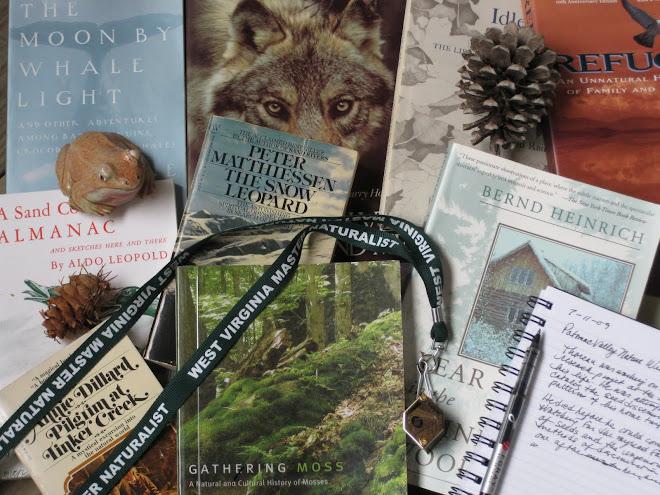|
“Jon Young is one of the heroes of the new nature movement, an expansion of traditional environmentalism.
With What the Robin Knows, he opens a door to a universe that overlaps modern life, a world lost to most, but found by some—because of teachers like Jon. This elegant book will deepen the kinship between humans and other species. It decodes our common language.”
—Richard Louv, author of The Nature Principle and Last Child in the Woods
| |
“Here is the ancestral wisdom passed down from Apache elder Stalking Wolf to renowned tracker Tom Brown to Jon Young himself, who in turn passes on to the reader the art of truly listening to the avian soundscape. With all senses more finely tuned, you’ll find yourself more aware of your surroundings, slowing down, and reconnecting with a native intelligence and love of the natural world that lies deep within each of us.”
—Donald Kroodsma, author of The Singing Life of Birds and Birdsong by the Seasons
| |
| “What the Robin Knows is a fascinating introduction to nature study beyond putting names on what we see, not just a guide to paying attention outdoors but full of tips on how to do it. It should help us discover the world of nature around us, often glimpsed but too often overlooked. This is less a book to read than one to use, one that will enrich our hours outdoors.” —Thomas R. Dunlap, author of In the Field, Among the Feathered | |
| “Jon Young knows birds, and you will, too, after reading his marvelous book. You’ll discover a universal bird language that will speak to you wherever you go outdoors. Every nature lover should read this book.“ —Joseph Cornell, author of Sharing Nature with Children and John Muir: My Life with Nature. | |
| “This book turns us inside out, opening our minds onto the wider mind of the land itself. It’s a brilliant work, born of a lifetime of listening, teaching, and tracking what really matters. By waking our animal senses, Jon Young’s work replenishes our humanity.” —David Abram, author of Becoming Animal and The Spell of the Sensuous | |
| “Naturalist Young (co-author: Coyote’s Guide to Connecting with Nature, 2008) explains how to understand the language of birds. Trained in anthropology at Rutgers, the author’s passion for bird-watching began in the salt marshes of southern New Jersey where he was raised, but he attributes his real learning to a series of mentors who trained him in Native American traditions. Young believes that native and scientific knowledge about nature are complementary, and that animal communication is “never just the robins communicating with other robins”—they transmit information to other species, which follow their calls. In his wilderness-training classes, Young teaches students how to listen and understand these communications. However, he notes, it’s a skill that can be practiced by anyone in the backyard or a local park, by choosing a “sit spot” and quietly observing what is happening in the same area every day. Young stresses the need to sit quietly, allowing the birds to accept our presence; after first flying away in alarm, they will return to their territory. “If we learn to read the birds…we can read the world at large,” he writes. “The types of birds seen or heard, their numbers and behaviors and vocalizations, will reveal the locations of running water or still water, dead trees, ripe fruit, a carcass, predators, fish runs, insect hatches, and so much more.” This information, shared by all the birds and animals living in a habitat, was crucial to the survival of hunter-gatherer societies. A trained tracker can learn to recognize how the variations in birdcalls and their behavior when alarmed can identify different predators such as hawks, crows and cats. A sophisticated guide for amateur bird watchers and a door-opener for newbies.” -Kirkus’ Reviews | |
Sunday, January 5, 2014
JAN-MAR 2014: JON YOUNG's WHAT THE ROBIN KNOWS
Subscribe to:
Post Comments (Atom)




No comments:
Post a Comment